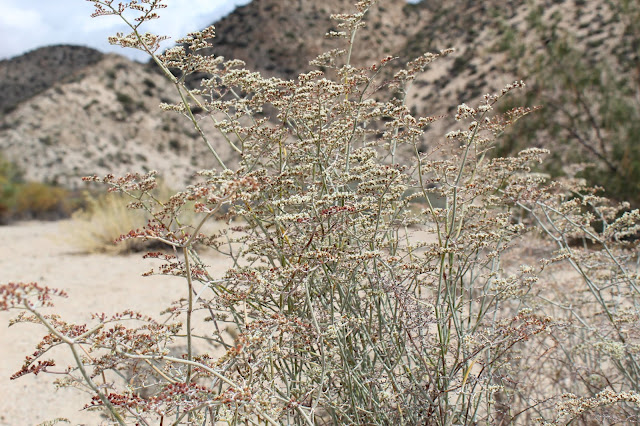All plants are beautiful in their own way, however some are incredibly striking and have a presence beyond their morphology. Erigonum Plumatella, commonly known by Flat Top Buckwheat or Yucca Buckwheat, is gorgeous to behold. Shades of red, purple, and white extend upwards on slender stalks, making a colorful and elegant statement in its native range, which includes the Pioneertown area.
Yucca Buckwheat rarely exceeds two feet tall, and doesnt spread very broad, adding to its sleek and capitvating profile. When flowering, tiny attractive blooms of white and light yellow cover its forking terminal stems.
In drier seasons, the tops of the plants begin to shrivel, making identification more difficult. Appearing to prefer higher elevations of the Mojave Desert, specimens can be observed growing close to one another in multiple separate small bunches.
In the sun rough rocks they boil
Some stones smooth rolled in a roil
Oh how hard they try to spoil
Peeking petals from the soil



















































